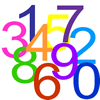list
Number fluency
Fluency is the focus of one of the three aims of the new National Curriculum. In this feature we bring together some of the tasks which we think promote numerical fluency in an engaging way. Some of these are games which could be played again and again, whereas others are one-off challenges. The article looks at the meaning of fluency in the context of number, and how it can often be
unintentionally misinterpreted.

